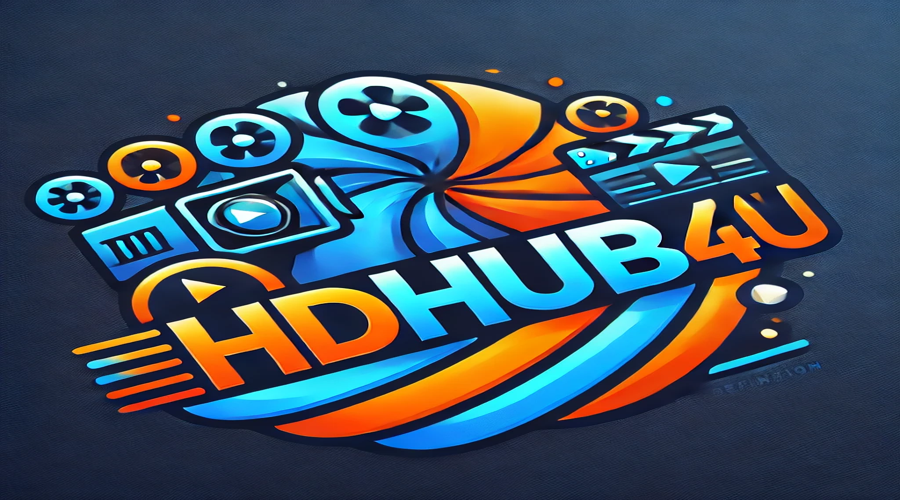Hd Hub4u.com: Decoding High Definition And What It Means For You
Have you ever wondered what "HD" truly means when you see it on a screen or hear it talked about, perhaps in relation to a site like hd hub4u.com? It's a term that pops up everywhere, from your television to your phone, and it suggests a better visual or audio experience. But what, you might ask, makes something "high definition," and why does it matter for what you watch or listen to? Understanding this isn't just for tech buffs; it's pretty helpful for anyone who enjoys media, you know, these days.
Basically, high definition is all about getting a clearer, more detailed picture and, sometimes, richer sound. It's a big step up from older ways of showing content, bringing things to life with more pixels and better audio coding. This means that when you're looking at something labeled "HD," you're getting a much more immersive and visually pleasing experience, which is pretty cool, if you ask me.
So, whether you're trying to figure out a new TV purchase, wondering about the quality of online content, or just curious about the buzz around terms like 4K and UHD, this discussion will shed some light. We'll explore what makes content high-definition, how different resolutions stack up, and what it all means for your daily dose of entertainment. It's actually quite simple once you break it down, and we're here to help you get a good grasp of it.
Table of Contents
- Understanding High Definition (HD)
- The World of Ultra HD and Beyond
- High Definition Audio Experiences
- HDR: For a More Vivid Picture
- HD on Mobile Devices
- Frequently Asked Questions About HD
- Conclusion: Embracing the Clarity
Understanding High Definition (HD)
When people talk about "HD," they are typically referring to a quality standard for visual content that offers a much clearer picture than older formats. It's like looking at a photograph that's super crisp versus one that's a bit blurry, you know? The difference is quite noticeable, especially on larger screens. This improved clarity comes from having more pixels packed into the screen, which makes the images appear smoother and more detailed. It's a big deal for how we experience movies and shows.
What is HDTV?
HD, in many contexts, means HDTV, which is short for High Definition Television. This term, as a matter of fact, describes a type of television that shows pictures with much more detail than traditional TVs. If you download a movie online and it says "HD高清版" (HD High Definition Version), that means its source was HDTV. It's like getting content directly from a high-quality broadcast signal, giving you that really sharp look. This is why it's such a popular format for video content, pretty much everywhere.
HD and Display Resolutions
Resolution is, essentially, the number of pixels that make up a picture on a screen. The more pixels, the finer the detail, so. For displays and televisions to earn the "Ultra HD" label, the Consumer Electronics Association (CEA) has some clear requirements. First off, the screen needs to have at least 8 million effective pixels, which means a resolution of 3840×2160. This is a lot of tiny dots creating the image, which really helps things look good.
Currently, you'll mostly see two main resolutions: 1080P and 2160P. These correspond to HD and 4K UHD, respectively. If you're using a 4K television right now, it's a good idea to pick 2160P content whenever you can. However, you know, some older movies, like Stephen Chow's "Kung Fu Hustle," might not be available in such high resolutions. So, while your TV might be 4K, the content itself might be limited to a lower quality, which is something to keep in mind, really.
The World of Ultra HD and Beyond
Beyond standard HD, we have Ultra HD, which takes visual clarity to another level. This is where you start getting into resolutions that are four times sharper than regular HD, offering an incredibly detailed viewing experience. It's like going from a good magnifying glass to a really powerful microscope for your visuals. This kind of resolution is becoming more common, especially with newer devices and content platforms, you know.
4K UHD: What You Need to Know
4K UHD, or Ultra High Definition, is a big step up. It refers to displays that have roughly 4000 pixels horizontally. The CEA specifies that for a display to be called "Ultra HD," it must have at least 8 million effective pixels, specifically 3840×2160. This means that without changing the screen's resolution, you get a significant jump in picture quality. It's a standard that ensures you're getting a truly high-quality image, which is pretty important for a premium viewing experience, right?
Graphics Cards and High-Resolution Gaming
When it comes to gaming, especially at resolutions like 1080P, 2K, or 4K, your graphics card does a lot of the heavy lifting. For example, if we look at a newer card like the RTX 5050, based on tests with 25 popular games, it shows what kind of performance you can expect. This data, you know, comes from sources like TechPowerUp's desktop graphics card tier list, which is a pretty reliable place to check performance benchmarks. A good graphics card means smoother gameplay and better visuals at higher resolutions, so it's a key component for serious gamers.
Intel (R) HD Graphics: Integrated Solutions
Intel (R) HD Graphics refers to the integrated graphics chip built into Intel processors. The name, in Chinese, literally means "Intel chip's own integrated graphics card." These are generally entry-level graphics solutions, often called "light-up machines" because they're just enough to get your display working. Their performance, you know, can vary quite a bit. You need to consider if it's a laptop or a desktop. Desktop versions often use UHD integrated graphics, which are pretty basic.
However, the "ultra" series of integrated graphics, as a matter of fact, show a significant performance boost. These integrated graphics consume more power and operate at much higher frequencies. If you're hoping for integrated graphics to handle more demanding tasks, you'll really want to get a laptop with good cooling. Models like the Xiaoxin Pro, ThinkBook+, or Wuwei Pro are good examples of laptops that can manage the heat generated by these more capable integrated graphics, allowing them to perform better, obviously.
High Definition Audio Experiences
High definition isn't just about what you see; it's also about what you hear. Just like visuals, audio can be "high definition" too, meaning it offers a richer, more detailed sound experience. This is especially true for things like music and movie soundtracks, where subtle sounds can really make a difference. It's a big part of creating a truly immersive media experience, you know, for your ears.
aptX HD and LDAC Audio Codes
When it comes to high-quality wireless audio, especially with Bluetooth headphones, you'll often hear about aptX HD and LDAC encoding. Many Bluetooth headphones that use Qualcomm solutions support aptX HD. This codec improves the audio quality by nearly doubling the bit rate to 576kbps, though it does add a little bit of delay. The sound quality, basically, gets a significant boost.
LDAC encoding, on the other hand, is a technology often found in Sony's mid-to-high-end audio devices. It's another way to get really good sound over a wireless connection. Both of these technologies aim to deliver audio that's as close to the original recording as possible, which is pretty neat for music lovers, you know, for real.
Troubleshooting Realtek HD Audio
Sometimes, you might run into issues with your audio, like when a Realtek HD Audio driver fails to install on Windows 10, giving you an error code 0001. If this happens, there's a pretty straightforward thing you can try. After you download the driver, remember to disconnect from the internet before you try to uninstall any old drivers and install the new one. This can often prevent conflicts that cause installation failures, so it's a good tip to keep in mind, really.
If you're trying to get sound through an HDMI connection, you can usually fix it by right-clicking the "This PC" icon on your desktop, then going to "Manage," and then "Device Manager." From there, right-click "Audio inputs and outputs" and choose "Scan for hardware changes." After it finishes, you should see a new line showing the HDMI connection. At that point, you can just click the speaker icon in the bottom right corner, and you'll find that the audio output has automatically switched to HDMI, which is very convenient, actually.
HDR: For a More Vivid Picture
HDR, which stands for High Dynamic Range, is another important aspect of modern display technology. I don't think we need to go into super deep detail here, but basically, it's about making the bright parts of the screen brighter and the dark parts darker, all while keeping the details in both. This makes the picture much more like what your eyes see in the real world, which is pretty amazing. It makes the screen feel more alive and, you know, draws you right into the content, creating a more immersive experience. It's definitely a feature worth looking for in new displays.
HD on Mobile Devices
Even on smaller screens like iPads and iPhones, the concept of HD is important. For instance, official Apple apps that work on both iPads and iPhones will have a "+" symbol on the download button. Sometimes, app developers will add "HD" to an app's name themselves, just to show that it's designed to look good on an iPad, differentiating it from an iPhone-only version. So, even though "HD" isn't an official Apple tag for apps, it's a way developers communicate better visual quality for larger screens, which is kind of helpful, you know.
Frequently Asked Questions About HD
What is the main difference between HD and 4K UHD?
The main difference, you know, comes down to resolution, which means the number of pixels on the screen. HD, often meaning 1080P, has 1920x1080 pixels. 4K UHD, on the other hand, has a much higher pixel count, typically 3840x2160 pixels. This means 4K UHD offers four times the detail of standard HD, leading to a much sharper and clearer picture, especially on larger displays. It's a pretty big jump in visual quality, actually.
Do I need a special graphics card for 4K content?
For watching 4K content, most modern computers and devices can handle it without a dedicated high-end graphics card, as long as the content is just playing back. However, if you're planning to play games at 4K resolution, you will definitely need a powerful, dedicated graphics card. Integrated graphics, like Intel (R) HD Graphics, are generally not strong enough for 4K gaming. So, it really depends on what you plan to do with the 4K content, you know.
Why does my HD audio driver keep failing to install?
Driver installation failures, especially for HD audio drivers like Realtek, can happen for a few reasons. A common one is conflicts with existing drivers or system processes. As a matter of fact, one good tip is to disconnect your computer from the internet before trying to uninstall the old driver and install the new one. This helps prevent automatic updates or other software from interfering with the process, which can often solve the problem, basically. It's a simple step that can save you a lot of trouble, really.
Conclusion: Embracing the Clarity
Understanding what "HD" means, along with its various forms like 4K UHD and HDR, really helps you appreciate the quality of the content you consume. From the pixel count on your screen to the subtle details in your audio, these technologies work together to create a more engaging experience. Knowing about these things can help you make better choices when buying new devices or even just picking what to watch. It's all about getting the most out of your entertainment, you know, and enjoying clearer, richer media. For more general information on display standards, you might find resources from the Consumer Technology Association (CTA) helpful, as they set many of these benchmarks.
So, as you explore various content sources, perhaps even a site like hd hub4u.com, keep these concepts in mind. They are, after all, the building blocks of modern digital media. Understanding them helps you appreciate the effort behind delivering such high-quality experiences, and it empowers you to seek out the best possible viewing and listening environments. It's a journey into better media, and that's a pretty good thing to be on, I mean, right?
Learn more about high-definition technology on our site, and for more specific technical details, you might want to check out this page .

Hdhub Movie 4u: A Comprehensive Guide To The Ultimate Movie Experience

HDhub4u: The Best Free Website for Movie and Series Enthusiasts

HDHub4u: Your Ultimate Guide to Safe & Secure Movie Streaming